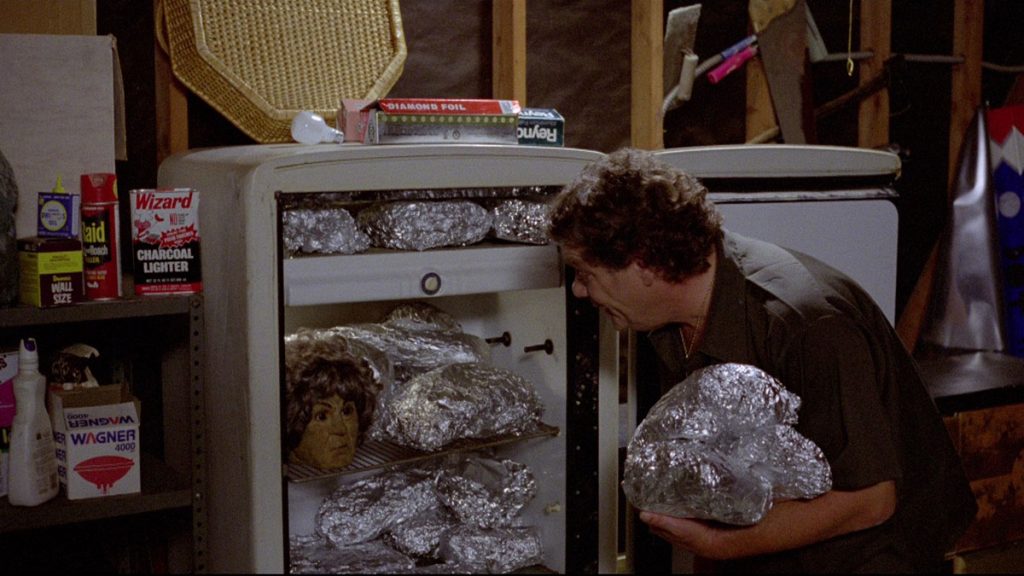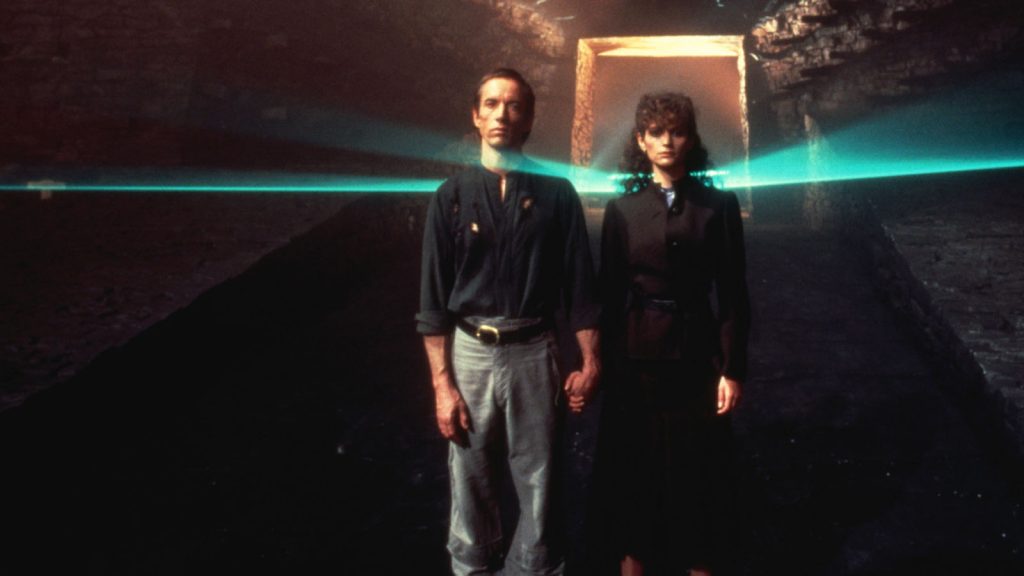
Before Thanksgiving became a speed bump on the capitalist road between Halloween and Christmas—because there’s not much to be bought and sold at Thanksgiving, save foodstuffs—the holiday was regarded as one of social morality. A checkpoint to our level of decency.
In more recent times, Thanksgiving has served as a convenient backdrop—meaning, excuse—for people to take to social media and do the “Look at me, aren’t I a good and grounded person” act by listing what they’re grateful for, which just happens to be things that play well with the masses for the garnering of likes, which we all know are so vitally important and telling when it comes to who you are as a person, what you offer the world, your ability, your mind, how much better you are than someone who gets less likes, and the quality of your human soul.
These are the people who also love to itemize each and every last component of their self-professed healing journey, which a strange amount of them seem to be on, ironically, considering the percentage of inhabitants of this earth who can’t wait to tell you what a great person they are. Who, then, is doing the damage? But there was a period when Thanksgiving stood as a day symbolizing what we can and should do for one another. People will remark that we are here—in the grand scheme of existence—to have fun, above all, which is pretty silly when you think about it, not to mention self-serving. If we’re ranking reasons, though, I’d say that right near the top, you’d have to put helping people. Others. This is what the first Thanksgiving was all about, no?
I’ve been serious thus far—albeit with a twist or two of mordant levity—and that’s about to change, because I am here to provide a service in what may be a small way, but then again, is anything truly small if it helps us get through a day? I should say not. Many view Thanksgiving as a day—which stretches to several—to get through. We are fragile, in part because we’ve made ourselves so. Primed to be triggered. We hang just above the chasm that we may descend into, our single thread snipped by some uncharitable comment, or, sweet heavens, an utterance of the truth, the monster of monsters of the 21st century.
Mix in unwanted political comment and blustery opinion, the prospect of adult children “breaking up” with their parents, their sibling, their aunt’s dog, whatever the case may be, and it’s little wonder that Thanksgiving marks the beginning of the season in which you are most likely to die from a heart attack. Obviously abetted by gluttony and the quantities of alcohol you are apt to be pouring into yourself.
What a scary holiday! And you thought that was Halloween. So here’s what I’ve done for you, and feel free to make use of this most Christian offering again over the course of future Thanksgivings, because those fourth Thursdays of Novembers aren’t going anywhere. I have watched films, none that will be confused with the works of Jean Vigo—or Ed Wood, in some instances—that pertain to the horrors of Thanksgiving and may allow you to take the edge off of your day, should there be one, even if in the “Fuck it, I’m so drunk, I’m actually going to watch this stupid movie!” sense, which I find can be useful.
The best way of beating the blues is often to give in to them for a few hours and combat pain with absurdity, which may or may not include accepting the absurdity of your situation, your family, and what I will call the entire human experiment as it tapers off. Or is doing so, in my view anyway. We’ll treat this compendium like a potential Thanksgiving day itself, with its hopes, reservations, fixed points, unpredictable aspects, food, booze, and leftovers. Okay? And remember: you owe me. I did what I did to myself for you.

Let’s not ease into this gently. If you travel for Thanksgiving back to the place where you grew up, you’re likely to convene with friends from back in the high-school days. I don’t have any friends, but I hear about this often. And though the experience sounds to me melancholic to the point of depressing—because so many of us never progress beyond the person we were in high school—it has a romantic appeal to me. I think both Linus and Keats, upon returning from this type of outing, would have cause for much reflection, and we might have gotten another Peanuts special or ode.
You’re also likely to be hungover the next morning, bit of a mess, which can get Thanksgiving off to a rocky start. In that spirit, it’s with 1983’s Microwave Massacre that we get our film fest going, and I’m going to say I cannot believe this exists. I don’t want to cite a movie as being traumatic, because trauma is neither a word nor a concept we should monkey around with, but this is a hard one for me to handle. The film—or whatever the hell this is—stars Jackie Vernon. You might not know the name, but you know the voice, because it belongs to Frosty the Snowman from Rankin/Bass’s much-beloved eponymous 1969 TV special.
Having heard how Frosty speaks, do you think anyone else could voice Frosty? No way, right? But here, you have Frosty—and it is impossible not to hear Frosty—saying things like, “What a nice pussy,” in what is kind of a porn film that doesn’t get off the ground as a porn film, and satire in the Little Shop of Horrors sense, but by default rather than any intention or vision. I spend Thanksgiving listening to various versions of the Grateful Dead’s “Dark Star” and Billie Holiday’s 1957 sessions, as well as watching the likes of Microwave Massacre, because, apparently, I choose to grapple with ideas like how all of this came to be made by what we call humans.
What you eat at Thanksgiving will eventually be microwaved—chances are—and here the microwave is the size of a dumbwaiter. They weren’t actually like that in 1983. Frosty’s wife is this pretend gourmand who views a classy approach to food as a means to social empowerment. She is killed by Frosty, who then eats her and loves her sweet taste.
How’s that for the hair of the Thanksgiving dog? Put that bad boy on first thing Thanksgiving morning as you ready yourself for the day and I bet you that whatever goes down next will seem better than it is. And before I forget: there’s a breast-based glory hole, which sounds hard both to design and implement, so you should check out how that works because you’re unlikely to find many other opportunities on that score.

What time are we eating? What time are we eating? What time are we eating? You hear that a lot at Thanksgiving, don’t you? Despite the fact that if you are foregathered with the same people you foregather with every year, you almost certainly are eating at the same damn time as always. One of the nice things about people stuffing their faces, though, is that it’s harder for them to make stupid remarks. Harder, but not impossible. Stupid has a penchant for finding its way out.
You can say, though, that expectation is a big part of Thanksgiving. The food is king. The celebrity of the bash. The to-be-devoured guest of honor. As a high-school student, I had a yen to see 1963’s Blood Feast, from schlock auteur extraordinaire Herschell Gordon Lewis. Couldn’t wait. I’d read about its luridities. Propensity for shock. I thought I was very edgy. I called myself the axe. I didn’t call myself the axe. But my sister made me a necklace out of beads and I listened to The Doors and eventually I located a copy of Blood Feast at the video store.
Blood Feast is lodged in cinema history as the first splatter film. Okay, establishing whether that’s true is akin to pinpointing the first heavy-metal record, but it’s in the twisted running. Remember, this was the year when The Beach Boys were first having success and what felt like rules—which would be gone before long—still existed when it came to movies. There’s a book club, a caterer up to no good, a nod or two to old mummy pictures, a cult, and a bizarre reliance on a garbage truck and a dump for key plot points. I don’t know, man, I just work here.
But… the film was a huge hit, grossing $4 million against its $25,000 budget. Lewis claimed Alfred Hitchcock’s Psycho as an inspiration. Um, okay. See this at least once in your life, though. On behalf of your cinema education. Blood Feast isn’t meant to be taken seriously, literally, satirically. It’s a parallel plane type of deal, I suppose, which makes it like a Cocteau picture. What? You don’t think people stretch the truth at Thanksgiving? You believe your cousin is really happier than ever and living her best life like she’s said a dozen times? The hell she is. So I’ll say what I want about Blood Feast.

Sometimes it feels like Thanksgiving exists at present so that we may have Black Friday, which exists on behalf of Christmas and for American families to move further into debt. Do I sound like Scrooge? Fine. He was correct, though, about a lot if you go back and read that book. It’s not my fault. Thanksgiving talk is paired with Black Friday plans. We can’t wait to turn the page of the former and dive headlong into the latter. Screw grandma and her house, it’s to the stores we go!
There was a time when those stores were in malls. Some still are. But to go to the mall in the 1980s was a big deal. That place was a subculture. An ecosystem. A world within the world. Malls were fascinating. Your life could change in a mall. As when I acquired a tape of Blue Cheer’s greatest-hits compilation (discounting that they didn’t have multiple hits), Louder Than God. Your romantic life could change—forever—at a mall. You went there with your friends, she went with hers, you met up by the fountain, you each got a greasy pepperoni slice at Sbarro, she lied and broke your heart by dumping you later for your now former best friend, and you were never the same again. That’s why your marriage was doomed before it began and one of your daughters doesn’t talk to you.
Films from the 1980s are often bad, but it’s rare that you watch one and can’t see its appeal. Chopping Mall is about some randy popular high-school kids and a couple of sweet nerds—have a guess who survives—planning to throw a party and bang after the mall has closed, in a store that sells beds. The mall is policed by three security robots that aren’t programmed quite right, which means that instead of gently correcting behavior trending in the wrong direction, they are switched to kill and then remark, “Have a nice day” afterward, because that was a surefire laugh producer in the 1980s.
And I must admit: if I went to a mall to watch this horror film about a mall with my buddies, I wouldn’t have hated it. Then again, I’m someone who saw Elves in the theater circa 1989 and felt I’d gotten my money’s worth for a Saturday afternoon. A perk with a bad ’80s movie is that you feel as if you’re doing a sociology project and understanding a phase of history better than you might have. The casual racism in these ventures, though, will knock you aback, like with a wisecracking—you know the type—reporter’s remarks at the mall’s press conference (because I guess malls used to have those?) announcing their new security robot line. As in, “Holy shit, did you really just say that?” Similar to that 87-year-old great aunt of yours who will be going out intoning whatever she damn well pleases whenever she damn well pleases because she made it that far, thank you very much.

If you’ve been watching these films as we go along, you may be of the mind that I’ve done you dirty. That because I am alone, I have attempted to worsen your Thanksgiving holidays in adherence with the misery-loves-company principle. Which hurts me. I’ve acted in good faith, a native of these parts who has stepped out of the woods to help broaden the repast of your table, fair pilgrim. But I shall offer you a bona fide olive branch all the same, because it never hurts to let someone know you didn’t mean to injure them, if you actually didn’t, should they feel like you did. It’s often how we move forward, when we’re able to. If you can’t swallow your pride, you don’t deserve to swallow any bird. Or the kale and tomato plate I will be having. Doubtless you are familiar with the concept, if not the saying.
All that Money Can Buy from 1941 is cornucopia horror. It’s quintessential folk Americana, a story embedded in the granite of the northeastern portion of the Republic—a Republic that can trace its roots back to the initial Thanksgiving and the winter it allowed the newcomers to this land to survive. As “The Legend of Sleepy Hollow” is to American horror fiction, All that Money Can Buy is to American horror cinema. The film reframes the Faustian bargain paradigm as a farmer’s growing house and property in 1840 New Hampshire. He’s a good man gone wrong. Considering how easy it is to tempt most of us with the slightest reward and how willingly many Americans will do wrong/screw people over/hurt people, what chance is there of anyone resisting the devil if he pops up with an offer?
The devil in All that Money Can Buy is wittily played by Walter Huston. The farmer (James Craig) must enlist no less the eminent statesman Daniel Webster (Edward Arnold) to represent him at a trial in his barn for his soul, with a jury comprised of some baddies from history. Rarely do you see this film discussed, but consider it a forgotten masterpiece of American horror.
Let’s be mindful of when it came out, too. The film was released on October 16. Thanksgiving soon followed, and even if we don’t know our history now, that doesn’t change what a seismic event Pearl Harbor—on December 7—was in this nation’s history and psyche. Many young men had just enjoyed the final Thanksgiving of their lives. Is it any wonder, then, that Thanksgiving was the biggest holiday in this country for a goodly stretch going forward? It meant something different then than it does now. Lots of things did, and that’s something we ought not to be thankful for, and endeavor to get back to, or bring about if we weren’t there.
A day gotten through and a new day started means the same thing, whether the day that has passed was a great one or a bad one: a chance to do and be better than we ever have before. May Thanksgiving—and even Thanksgiving horror films—remind you of this, and help you better serve others, and yourself by extension, because that’s what it’s all about. 🩸
is the author of eight books, including the story collection, If You [ ]: Fabula, Fantasy, F**kery, Hope, a 33 1/3 volume on Sam Cooke’s Live at the Harlem Square Club, 1963, Meatheads Say the Realest Things: A Satirical (Short) Novel of the Last Bro, and a book about 1951’s Scrooge as the ultimate horror film. His work has appeared in Harper’s, The Atlantic, Rolling Stone, The New York Times, Vanity Fair, The Daily Beast, Cineaste, Film Comment, Sight and Sound, JazzTimes, The New Yorker, The Guardian, and many other venues. He’s completing a book called And the Skin Was Gone: Essays on Works of Horror Art. His website is colinfleminglit.com, where he maintains the Many Moments More journal, which, at 2.7 million words and counting as of autumn 2023, is the longest sustained work of literature in history.
The holidays I love the most are Halloween and Christmas—as I’m sure many others would choose—and Easter, which gives the other two a competitive push.
BY COLIN FLEMING | April 17, 2025
When it comes to ghost stories—the foundational texts, be they written or oral, of horror—the Irish are tough to beat. Fear is a spirit. A ghost may take the form of what we’ve allowed ourselves...
BY COLIN FLEMING | March 17, 2025
Upon initial considerations, lovers of horror films might not strike us as romantics.
BY COLIN FLEMING | February 10, 2025

This pre-Code offering packs a lot of story into its typically brisk running time, with several plot threads weaving together a (not always successful) tapestry of spooky and criminal doings.
READ MORE >
BY ANN OLSSON | Month 00, 2021

In what could be the fastest-resulting rape revenge movie, a drunken lout brutally forces himself on Ida, the young woman who doesn't return his affections, during a party over Labor Day.
READ MORE >
BY LAURA KERN | Month 00, 2021

Beast is a lot of movies in one package - fractured fairy tale, belated-coming-of-age story, psychological drama, regional horror film - but above all it's a calling card for its leading lady, Jessie Buckley.
READ MORE >
BY LAURA KERN | Month 00, 2021